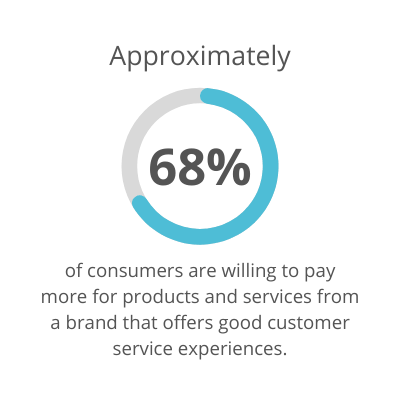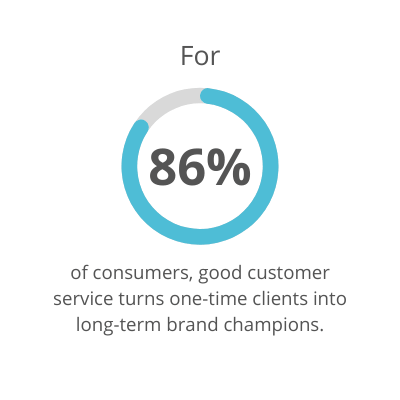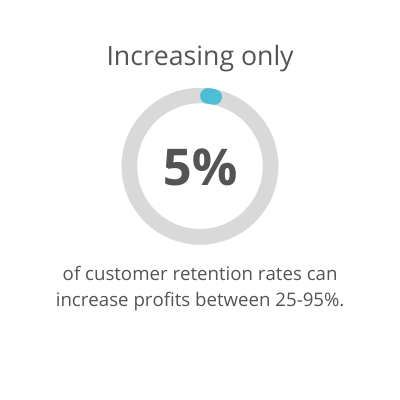Customers are at the heart of all businesses. They are the driving force behind the success of your company. The way your customers interact with your brand is ever-evolving, making customer satisfaction a critical issue that companies should never ignore. A bad customer experience is a leading cause of customer churn, which can be detrimental to your business. Measuring customer satisfaction provides you with essential data to monitor what is working well in your products and services and what is not.
Companies should endeavour to capture customer satisfaction data regularly to ensure a good customer experience. Continually measuring customer satisfaction will ensure your customers remain loyal to your company and continue to grow your business.
What is Customer Satisfaction?
Customer satisfaction is a measurement businesses use to quantify the level to which a product, service, or experience meets a customer’s expectations.
Customer satisfaction scores can assist a company in determining how to improve or change its products and services and are one of the most valuable indicators of customer purchase intentions and loyalty.
Businesses can collect customer satisfaction scores using several collection methods such as a Likert scale survey or a Net Promoter Score (NPS) survey. You can obtain these measures at different times, such as immediately after a transaction or a fixed date in the customer relationship.
Why Customer Satisfaction is Important
Customer satisfaction is important for three reasons, to reduce customer churn, increase retention and driving sales. Customer satisfaction has a direct impact on retention and loyalty. High customer satisfaction scores are one of the best indicators to reveal how satisfied customers are with your products, services and experiences and, therefore, whether they will turn into loyal customers or purchase from a competitor. Customer retention powers sales and helps businesses maintain sustainability and drive growth. Here are the top three reasons why customer satisfaction is important.
- Reduce Customer Churn
Obtaining customer satisfaction scores helps to identify unhappy customers. Without this critical information, you will not know who will likely churn and why the customer is dissatisfied. When customers begin to churn faster than you can acquire new customers, this will detrimental to sales.
- Increase Customer Retention
Customer retention is one of the most critical factors in long-term business growth. You can acquire customers as rapidly as you’d like, but you don’t have a sustainable business if they aren’t sticking around. In addition, customer retention and creating repeat customers is cheaper than acquiring new customers. Customer satisfaction is vital if you want to turn new customers into loyal repeat buyers.
- Drive Sales
Customer satisfaction scores can help you identify areas you can quickly improve to increase satisfaction and drive customer retention. Finding problem areas can be worth significant amounts in regards to return on investment.



Would you like to discuss this topic more?
How to Measure Customer Satisfaction
There are many strategies to measure customer satisfaction and loyalty. Here are five key customer satisfaction measurements to collect customer data.
- Customer Surveys
Customer surveys are one of the most widely used tools to gather customer satisfaction data. Customer surveys provide accurate and actionable items to improve customer service. There are several ways a company can administer surveys, including:- In-app surveysOnline surveysFeedback formsOffline surveys such as phone or text surveys
Businesses can create custom surveys using a survey tool that asks respondents questions related to key customer satisfaction indicators relevant to the company. Remember, customers are very busy. Ensure that your surveys are short and specific.
- In-app surveysOnline surveysFeedback formsOffline surveys such as phone or text surveys
- Customer Satisfaction Score (CSAT)
The customer satisfaction score is a historic indicator for measuring customer satisfaction scores. Obtaining a Customer Satisfaction Score is straightforward. Simply ask your customers, ‘how satisfied were you with your experience?’. The scale typically ranges from 1-5, or highly unsatisfied to highly satisfied:High unsatisfied- UnsatisfiedNeutralSatisfiedHighly Satisfied Once you have collected answers from the desired number of customers, the CSAT score is easy to calculate. Count the sum of positive responses and divide that by the total responses collected, then multiply that number by 100. For example, if you received 50 responses and 35 of them were positive, your CSAT score would be 70% (35 positive responses / 50 responses = 0.7 x 100 = 70). The higher your CSAT score, the more satisfied your customers will be. Although this is a simple customer satisfaction metric, it only measures recent transactions. To understand the wider customer relationship, you may need to implement other customer satisfaction measurements.
- Net Promoter Score (NPS)
Like the CSAT score, the NPS score is easy to implement. However, instead of asking customers how satisfied they were with their experience, you ask them how likely they are to recommend your product, service or brand to others.Respondents provide you with a rating between 0 (not at all likely) and 10 (extremely likely). Depending on their response, customers fall into one of three categories:
- Promoters give a score of 9 or 10. These are typically your most loyal and enthusiastic customers.Passives give a score of 7 or 8. They are satisfied with your service but not enthusiastic enough to be considered promoters.Detractors give a score of 0 to 6. These are unhappy customers who are unlikely to buy from you again. Some of these customers may even discourage others from buying from you.
To calculate your Net Promoter Score, subtract the percentage of detractors from the percentage of promoters. A high percentage means that most of your customers are loyal to your brand and likely to contribute to business growth. A low percentage may indicate your customers are unhappy and unlikely to repeat purchase or recommend your business to others.
- Customer Effort Score (CES)
The Customer Effort Score (CES) is a customer satisfaction survey used to measure the effort customers put in to interact with your business and use your products and services. A CES survey typically asks, “on a scale of ‘very easy’ to ‘very difficult’, how easy was it to interact with our company.” The aim of obtaining a Customer Effort Score is to understand how easy it is for your customer to do what they need to do. Ease of service can create a loyal customer by helping them quickly solve their problems.
- Check Your Social Media Pages
Your Social Media platform has tremendous untapped potential for analysing customer satisfaction. Customers in recent years increasingly turn to Social Media to praise or complain about companies and brands. With the possibility of social media posts and comments reaching thousands of people almost instantaneously, businesses should regularly monitor social media. Many tools help you track how your brand is performing on social media. However, a simple analysis is the amount of positive, neutral and negative sentiments. The higher the number of positive sentiments, the higher the possibilities of excellent customer satisfaction.
Customer Satisfaction Tools
Customer Satisfaction Surveys
Customer Satisfaction survey tools are available from many providers. These online survey tools include a host of customisations and features to design a questionnaire specific to your needs. The best customer satisfaction survey tools offer you a dashboard to monitor responses and view results. FinxS Surveys are among the most intelligent survey tools that allow you to fully customise and brand your questionnaires.
NPS Surveys
Net Promoter Score Surveys are another widely available survey and much easier to implement quickly. If you already have a CRM, marketing software or workplace assessment provider, check whether they supply an NPS Survey tool. This means you can quickly set up a survey without having to go through the sales process with another provider.
Whichever tool or customer satisfaction measure you decide to implement, we highly recommend having at least one. Measuring Customer Satisfaction is essential to a growing business and allows you to calculate future sales and identify untapped potential in your company.
Three Customer Satisfaction Examples
Are you looking for inspiration to help improve your customer satisfaction? Check out these three examples of Australian brands that score highly in customer satisfaction.
Professional services giant KPMG surveyed consumers across Australia to uncover businesses with the best customer service and experience in 2020. These businesses demonstrate high levels of customer satisfaction and loyalty. Australian consumers selected three brands as their top for customer experience: First Choice Liquor, IKEA, and Afterpay.
- First Choice
First Choice Liquor was created when parent company Coles Liquor merged their Liquor Market stores with First Choice. Respondents highlighted the store design, product range, availability and value when selecting First Choice. These factors, coupled with friendly and helpful staff, led to First Choice landing the number one spot. Notably, First Choice responded quickly to COVID-19, offering safe ‘non-contact’ click and collect and home delivery options.
- IKEA
IKEA leveraged Australians who prioritised looking after their home environment as people worked and exercised from home throughout 2020. Australian consumers transitioned from physical stores to the IKEA website seamlessly. They scored highly in the personalisation and empathy factors of customer satisfaction.
- Afterpay
Coupled with their simple payment structures, Afterpay’s reliable and helpful customer service is what helped them land a spot in the top three. The convenience and support that Afterpay offers have led customers to look for brands that offer Afterpay as a payment service.
Ready to measure and improve your customer satisfaction?
Contact us today to explore the best tools and strategies for keeping your customers loyal.




